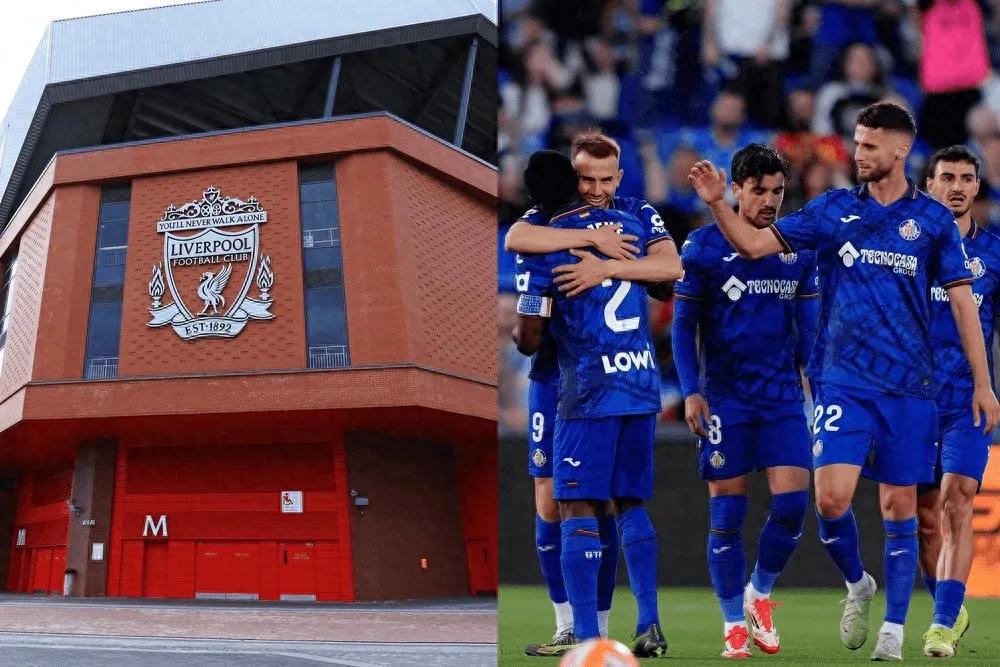Fenway plans to acquire Getafe, signaling Liverpool’s imminent move toward a “multi-club” model

Written by Han Bing On September 25, UK and Spanish media revealed that Fenway Sports Group, Liverpool’s parent company, has finalized the due diligence for acquiring La Liga’s Getafe. This signifies Liverpool’s long-awaited move toward a multi-club structure, inspired by the successful models of Manchester City and particularly the Red Bull Group. The trend of multi-club ownership is rapidly growing among Premier League teams. In summer 2023, Chelsea acquired Strasbourg; by the end of 2023, Sir Jim Ratcliffe’s investment in Manchester United also brought French club Nice and Swiss side Lausanne-Sport under the umbrella. Now, Liverpool is set to join the ranks of these multi-club powerhouses.
Fenway Sports Group has long had a strategic plan to acquire “feeder clubs,” led by returning sporting director Edwards. Both Fenway and Edwards admire the Red Bull Group’s highly successful multi-club model and hope Liverpool can replicate their achievements.
At the end of last year, Fenway initially approached French club Toulouse and Spain’s second division Malaga, but those deals did not materialize. Additionally, Edwards and his partners Ward and Marquez’s team have assessed and conducted due diligence on 25 clubs including Levante, Elche, Espanyol, and Valladolid.

Ultimately, through the connection of Real Madrid vice president José Sánchez, Fenway set its sights on Getafe, located in the Madrid suburbs. The Spanish owner Ángel Torres, who has controlled Getafe for 23 years, initially insisted he would not sell, but after setting a price of £160 million (€185 million), he has now lowered it to £100 million (€115 million), making the deal feasible.
On August 2, during a friendly match between Getafe and Hull City in England, news of Fenway’s acquisition interest emerged. A few days later, Fenway’s delegation flew to Madrid to review Getafe’s financial records and infrastructure.
In 2011, members of the Dubai royal family showed interest in buying Getafe, with offers ranging from €70 to 90 million, and rumors even circulated about a change in the club’s badge. However, the Getafe chairman quickly denied the deal. This time, Fenway Sports Group is determined to succeed.

Beyond taking the first step in their multi-club strategy, the acquisition is crucial for overcoming transfer market challenges post-Brexit by owning a European feeder club. Previously, when 16-year-old Bajcetic transferred from Celta to Liverpool, the club had to rush the deal due to Brexit-related rule changes. If the Getafe acquisition is completed, Liverpool could use the club as a stable base for scouting and developing new players, similar to Chelsea. This “feeder club” model is more beneficial for nurturing talent than the current loan system.
In multi-club football, Europe’s Red Bull Group is the most successful, while in the Premier League, Manchester City’s parent company City Football Group pioneered resource diversification. City uses its global network of feeder clubs to place and evaluate young players; over ten have graduated to City’s first team, with Bolra and Savinho among the most notable. If Liverpool acquires or forms a close partnership with Getafe, only Arsenal, Brentford, Fulham, Tottenham, and Wolves will remain Premier League clubs without a multi-club structure.
It’s worth mentioning that Tottenham’s parent company ENIC invested in Glasgow Rangers, Slavia Prague, AEK Athens, Vicenza, and Basel during the 1990s, selling all shares by 2007. Now, Tottenham is actively seeking European feeder clubs again, focusing on the Nordic region. The trend of multi-club ownership is becoming unstoppable in the Premier League.











 Links
Links
 Contact
Contact
 App
App


